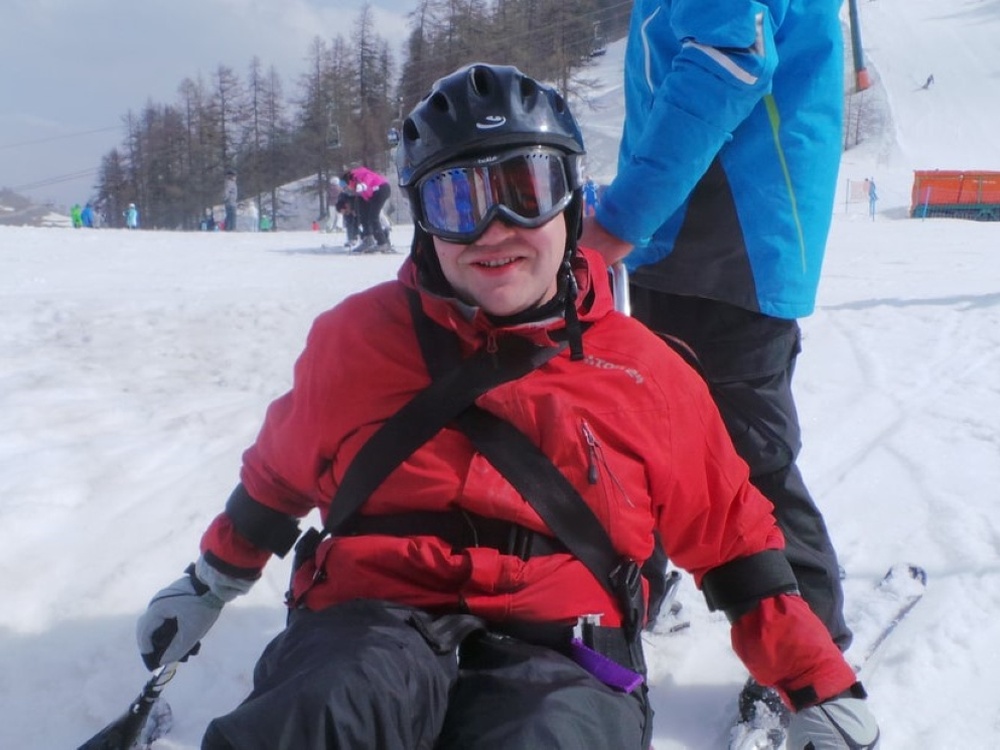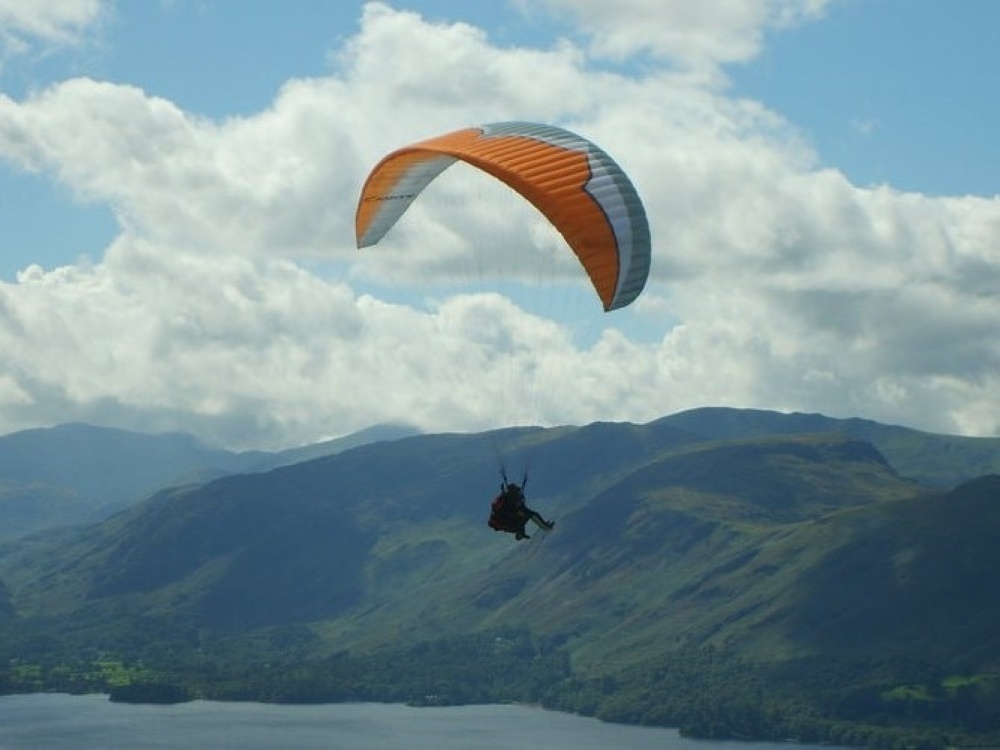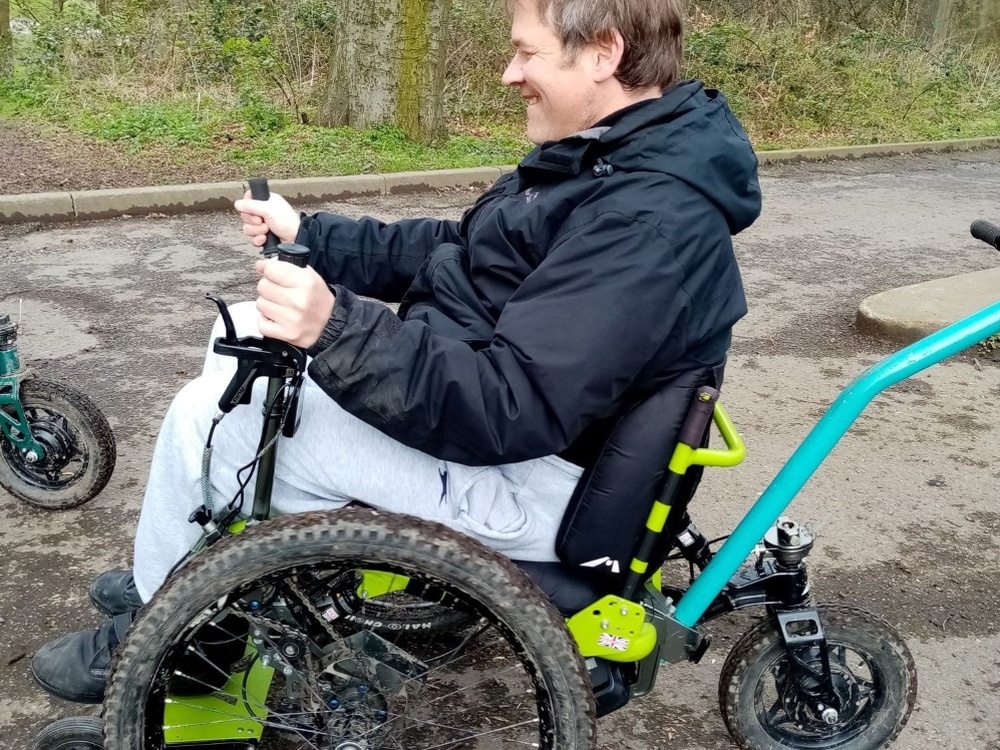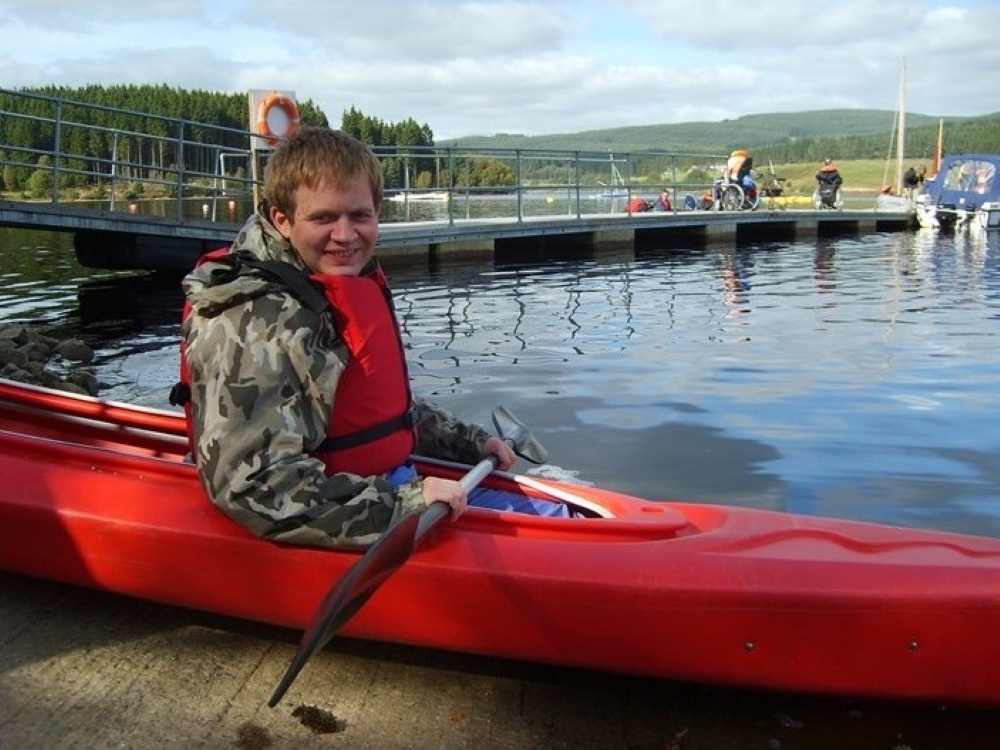Despite being visually impaired and confined to a wheelchair, Ian’s no stranger to trials of endurance, having already completed sky dives, wing walks and bungee jumps, canoed down plenty of rivers and skied his fair share of snowy slopes. However there’s still plenty more this action man wants to accomplish.
Like many of us, he found himself with time on his hands during lockdown in 2020, and decided to use that time to write his autobiography, create an accompanying podcast and launch a website. He wrote about all the things he’d already accomplished, despite his mitochondrial disease, and put together a ‘bucket list’ of things he’d still like to achieve, very aware that his energy levels had been decreasing in recent years and time wasn’t on his side.
“When I put my list together,” Ian explained, “I said I wanted to go to the Edinburgh Fringe, and even perform stand-up there. I’ve done some stand-up in York before, mainly at open mic nights and charity events. Originally I’d wanted to climb a mountain too, but I took that out because I’d spoken to a few people who said it would be impossible to do, and replaced it with abseiling. And then I crossed paths with James. He had a few friends who wanted to do something together for charity, and he joined the dots for me. That’s how this challenge became possible.”
“I go to the Royal Victoria Infirmary in Newcastle once a year, and a few years ago I told them I wanted to climb Kilimanjaro. The doctor said to me, “At that altitude, definitely not! You just won’t manage it.” So Snowdon’s the next best thing!” Ian and his support team have been planning their adventure since late last year, with the aim of raising awareness of mitochondrial disease, and money for The Lily Foundation and a charity called Remap, who create bespoke equipment for disabled people and often support Ian with his wheelchairs.
Going for a test drive
Ian will be making his ascent in a specially designed mountain trike propelled by levers rather than by rotating the wheels. Just this morning he went to test drive it for the first time, starting off with an hour before building up to two then three hours over the next couple of months ahead of the summit attempt in June. We asked him how the test drive went. “It was alright this morning – takes a bit of getting used to,” he laughed.
“When I’m pushing my wheelchair normally, I can see what’s coming up, I can see people walking if they’re just in front of me but that’s about it. But then using the trike, it’s so much faster, it was left a bit, right a bit, there’s a barrier, stop! I’m going a lot quicker than usual and I saw it just in time! I did use the ‘e’-version but you’ve only got that help when you request it, and having spoken to my team they suggested I stick with the manual version as it’s lighter.” Ian’s sheer determination is admirable, but we think that optional electric extra might be advisable!
All credit to Ian though, he’s been working hard to get himself in the best possible shape ahead of his challenge. “It’s no good me going to the gym,” he explained, “because as soon as I get there I’m tired and can’t do anything. So I have a home rowing machine, and I’d been building up from five minutes a day all the way up to half an hour since last year. And then I caught COVID.” Frustratingly for Ian, that set his training back, but now he’s back up to 17 minutes a day and increasing each week. He’s also been using a resistance band to alternate between ab curls and shoulder presses daily.
Ian’s no stranger to pain, having been plagued by trouble with his knee and in and out of physio for years. He was eventually referred to a specialist, had an MRI scan, and now he’s starting to feel a difference when doing his prescribed exercises. “Originally I was just using my right side,” Ian told us, “and finally I started to feel some muscles aching. I wondered what would happen if I did the same on my left side, and I actually ended up feeling some pain there too. As a result of a car accident when I was five, I was left with some brain damage that caused partial paralysis so I rarely get any pain down my left-hand side when I do any exercise, but I don’t look on that as a negative – I think it’s great!”
Fighting the exhaustion
We asked Ian what challenges he might face during his attempted ascent, and for him it’s the fatigue and lack of energy. “I’m glad I’m doing this now and not in a year or so,” he reflected, “because I do already struggle with energy. I went skiing a couple of weeks ago – I’ve been skiing for over 10 years now – but I always hit the slopes in the morning, when my energy is best, and then chill out in the afternoon. While I can still manage it, I want to keep doing it. Although I do need to be in a sit ski, and I can’t see. If I could see what I was doing half the time I probably wouldn’t do it!”
It’s not just on land that Ian’s a daredevil either – he’s making a splash in open water too. Last year he raised money for The Lily Foundation by completing a sponsored swim in Windermere. He canoes regularly too, and a few years ago found out about a triathlon for disabled people – you can guess what happened next. Ian had half a dozen helpers swimming at the same time, and several pals on bikes around him. But one thing’s for sure – he doesn’t like anyone pushing his wheelchair for him on the last leg. “As long as there’s someone at my side, I’ll do it myself. Usually with a triathlon one person does one leg, another does the next, and so on. I do it all. I can’t not do it!”
So where does Ian get his drive from? “One of the big things with the climb is to do it while I can still physically manage it,” he reasons. “The mitochondrial disease seems fairly stable at the minute but you never know what’s around the corner. At times I forget I’m disabled because I’ve lived with my condition all my life, I’ve dealt with not being able to see for years. You just get on with it, you get on with life.”
Ian is certainly getting on with ticking off all the challenges on his list, and we wish him good luck for his Snowdon challenge this summer. You can purchase a copy of his book, ‘Living with Mitochondria Against All Odds’, with a percentage of the book’s profits going to The Lily Foundation. Because we need your help so we can keep supporting mitochondrial disease patients like Ian.




